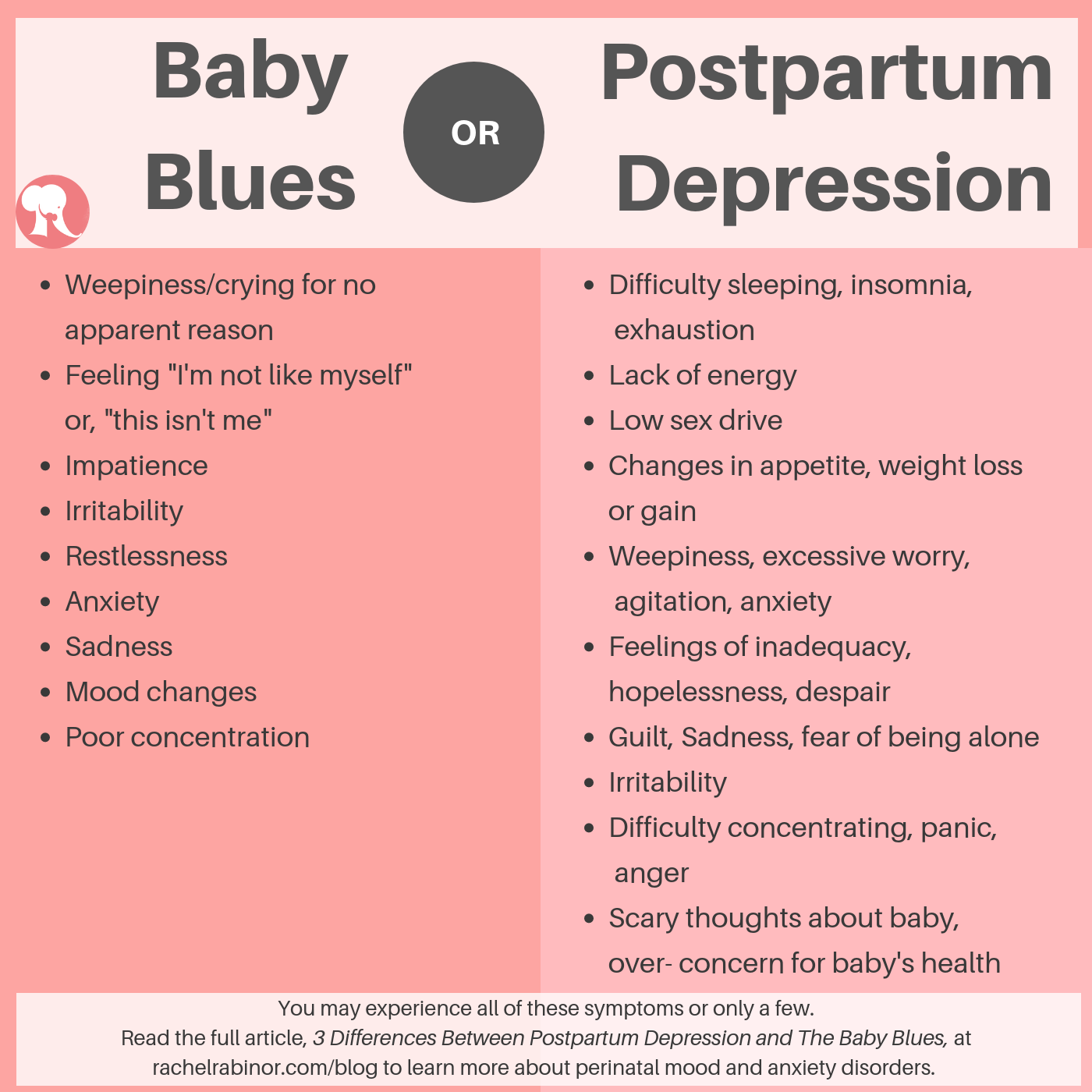Reducing the Stigma of Maternal Mental Health Disorders
Advocates are hopeful that by normalizing the prevalence of Perinatal Mood and Anxiety Disorders (PMADs), more women will understand the differences between the baby blues and postpartum depression. Greater awareness will allow for the realization that “something’s not right”— with me, my wife, my sister, my daughter, and thus more screenings for prenatal and postpartum depression and anxiety. PMADs are very treatable with professional help. With help you will feel better.
May is Maternal Mental Health Awareness Month. It’s a month to raise awareness for postpartum depression and anxiety and just how prevalent it is—One in seven! It’s a month to educate people about postpartum PTSD and that you CAN in fact be traumatized by your birth. It’s also an opportunity to let our community know that some women are at a higher risk for developing postpartum psychosis (a personal or family history of bipolar disorder increases her risk). Many are surprised to know that up to 80% of new moms experience the baby blues, it’s that common! Perinatal Mood and Anxiety Disorders (PMADs) are the number one complication of pregnancy.
Advocates are hopeful that by normalizing the prevalence of maternal mental health disorders, more women will understand the differences between the baby blues and postpartum depression. Greater awareness will help people detect when “something’s not right”— with me, my wife, my sister, my daughter, and hopefully lead to more screenings for prenatal and postpartum depression and anxiety. It's estimated that less than 50% of women struggling with a PMAD seek treatment, despite the fact that they're extremely treatable with professional help. Some reports estimate as few as 15% of women who struggle seek treatment, though it's difficult to know for sure since shame and stigma prevent many from reaching out.
There are many ways to support the mental health of women and their families during the childbearing years. Below are 5 ways that you can help reduce the stigma of maternal mental health disorders and advocate for greater awareness in our community.
5 Ways to Advocate for Maternal Mental Health
- Join your local chapter of Postpartum Support International. In San Diego, our chapter is called the Postpartum Health Alliance. I’m proud to volunteer my time as the Outreach Co-Chair and serve as a warmline volunteer. There are loads of ways to help build awareness and educate your community through your local organization.
- Display a Blue Dot—the new national symbol for Maternal Mental Health. You can purchase your magnet or sticker here. Not only are you supporting this important cause with your financial contribution, but you’re letting those around you know that you’re an aware and concerned citizen; It’s a conversation starter that will let more people know about PMADS and the risks to moms and babies who go untreated.
- Write letters to congress in support of the Bringing Postpartum Depression Out of the Shadows Act of 2015! That will provide grants for screening and treatment for perinatal mood and anxiety disorders.
- Participate in your local Climb Out of the Darkness hike in June to raise awareness of maternal mental health disorders. These events are coordinated by local volunteers through Postpartum Progress. To join San Diego’s hike, contact Julie Thorpe
- Don’t forget to ask the mothers you love and care for about their mental health: How are you sleeping? How are you eating? How are you feeling? If you're not sure how to address someone you think is struggling, this article provides some helpful strategies.
If you suspect that you or someone you love has a perinatal mood or anxiety disorder, reach out for help today. Rachel Rabinor, LCSW is a psychotherapist in private practice; she helps women struggling with their transition to and through motherhood in her San Diego office. She also offers in-home counseling and Walk and Talk Therapy. For resources outside of San Diego, contact your local chapter of Postpartum Support International.
3 Differences Between Postpartum Depression and The Baby Blues
People often confuse the Baby Blues and Postpartum Depression. Some like to say that all moms have a bit of postpartum. Have you heard that? When I hear that I presume they're not sure what the difference is between the Baby Blues, which are normal mood fluctuations after having a baby, and something more serious like Postpartum Depression or Postpartum Anxiety.
People often confuse the Baby Blues and Postpartum Depression. Some like to say that all moms have a bit of "postpartum". Have you heard that? When I hear that I presume they're not sure what the difference is between the Baby Blues, which are normal mood fluctuations after having a baby, and something more serious like Postpartum Depression or Postpartum Anxiety (and then there's the very important fact that "postpartum" is actually a period of time, not a condition).
For the purpose of this post, I want to clarify that PPD and PPA are NOT the only mental health concerns during pregnancy or postpartum. They fall under the umbrella of Perinatal Mood and Anxiety Disorders (PMAD), but I wouldn't have caught your attention with that title now, right?
Are there visual cues to detecting Postpartum Depression?
It's not only regular folks who are confused about the differences, but some medical professionals are also a bit unclear. I've heard that some some professionals specializing in women's health don't formally screen for perinatal mood or anxiety disorders because they feel they can tell whether a mom is struggling with PPD just by looking at her. Is it possible, you wonder?
Here's a quick quiz: below are two images of postpartum women. Which woman has the Baby Blues? Which has Postpartum Depression? If you're struggling with Postpartum Depression right now, or have in the past you know better than to fall for this one: you don't have to be sad and teary to be diagnosed with a PMAD. In fact, many women make an enormous effort to look put together. If this sounds like you, you're definitely not alone.
Image A
image b
The Face of the Baby Blues
The massive hormonal shift immediately after birthing a baby will more likely have you looking like the image on the left, "Image A" than the one on the right, "Image B". A shocker for many despite the fact that the Baby Blues affects up to 80% of mothers and as I said earlier, are due to a normal fluctuation of hormones.
Danielle Haines, on the left (Image A), is a doula and midwife in-training. She posted this raw image of herself on Facebook a few months ago. It was taken days after giving birth to her son, and she shared it in an effort to shed light on what the adjustment to early motherhood really looks like. Sadly, there's still stigma attached to this normal postpartum experience. Women are unfortunately hesitant to share that motherhood isn't all ice cream and roses.
The Face of Postpartum Depression
The image on the right, of course, is Hayden Panettiere. She looks like so many new moms--walking on the beach, seemingly happy with her baby and fiancé. No visual cues that she is suffering. This is also how many women who are suffering survive, by projecting a put-together image of themselves, avoiding the shame and stigma that still persists. Meanwhile they're falling apart on the inside. Alone. Because they "look fine" no one pays attention. They slip through the cracks. Up to 20% of women experience a Perinatal Mood or Anxiety Disorder.
When this photograph of Panettiere was captured her baby was three months old. She sought treatment for postpartum depression seven months(!) after that image was publicized. Fortunately, times are changing and celebrities like Hayden Panettiere are more open about their real-life experiences adjusting to early motherhood. Thankfully there is a growing effort to destigmatize PMADs, and to motivate others to get the help they need.
Symptoms of Postpartum Depression vs the Baby Blues
So if we (doctors included) can't tell by looking, how can we know if what we're feeling is part of the normal adjustment to early motherhood or something more serious? Below is a cheat sheet describing the different symptoms one may experience with either the Baby Blues or Postpartum Depression. You may notice some similarities. Keep reading below to better understand the differences.
It's not necessarily what you are feeling. It's how often you feel it, how long you have been feeling this way, and how much it impedes your functioning.
1-Duration
How long have you been feeling this way? The baby blues typically resolves within 2-3 weeks after giving birth, whereas Postpartum Depression symptoms continue for longer, and may present several weeks or months after having a new baby (*or bringing one home-- PPD impacts adoptive parents as well as fathers/non birthing parents).
2- Intensity
How much are these feelings interfering with your life? If you're not sure how to evaluate intensity, answer these questions:
Do I find it hard to care for my own basic needs or those of my baby or other children? Is my eating or sleeping affected by these feelings?
Are these feelings interfering with other important relationships? With my partner? Other family members? Friends? Work?
3-Frequency
How often are you feeling this way? Once a week? Once a day? Nonstop? There's a difference.
It's important to recognize that some of the most common symptoms of postpartum depression-- rage and anxiety for example-- look nothing like the stereotypical image of a saddened, depressed woman who can't get out of bed. Symptoms of the Baby Blues respond extremely well to rest and other forms of self-care. Here's an article that outlines 6 Ways to Improve your Postpartum Self-Care.
Getting help for Postpartum Depression
If you've been struggling with distressing thoughts and feelings for longer than two weeks, I recommend that you reach out to your doctor or a psychotherapist who specializes in perinatal mood and anxiety disorders.
And if it's less than two weeks but you just "know" something's not right, pay attention to that inner voice. Trust that you know yourself best and reach out for help. It really doesn't matter what we call it; you and your baby both deserve the care and attention you need to thrive. It's also important to reiterate that Postpartum Depression as referred to in this article, falls under the umbrella of perinatal mood and anxiety disorders, PMADs, which encompass other illnesses such as postpartum obsessive compulsive disorder, postpartum anxiety, postpartum post-traumatic stress disorder and postpartum psychosis.
If you or someone you know is struggling with a Perinatal Mood or Anxiety Disorder, please reach out for support. PMADs are very treatable. In my private practice in San Diego, California where I specialize in Maternal Mental Health, I offer a free 30 minute in-person consultation to find out if I'm the right therapist for you. Postpartum Support International (PSI) is a national organization that maintains a warmline and a list of trained providers specializing in Maternal Mental Health. If you’re in San Diego, CA, The Postpartum Health Alliance is our local chapter of PSI and a wonderful resource.







